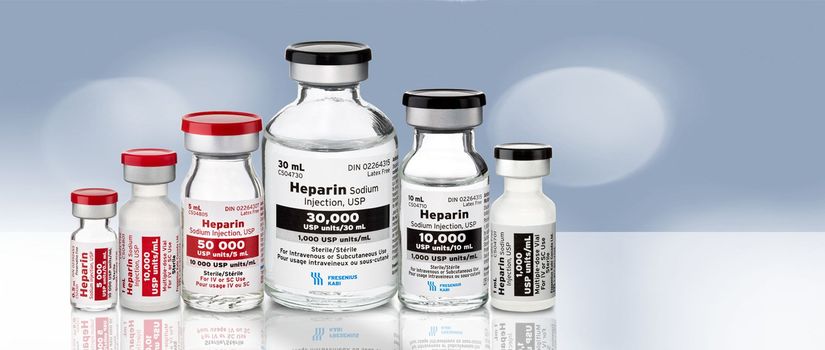
Heparin is a sulfated glycosaminoglycan present as a mixture of heterogeneous molecules varying in molecular weighs used in medicine as anticoagulant. It is present in mammalian tissues and is usually obtained from the intestinal mucosa or other suitable tissues of domestic mammals for food by man. It is purified to retain a combination of activities against different fractions of the blood clotting sequence. It is composed of polymers of alternating derivatives of D-glucosamine (N-sulfated, O-sulfated or N-acetylated) and uronic (L-iduronic acid or D-glucuronic acid) joined by glyosidic linkages. Fractionation of the heparins produce the low molecular weight heparins (LMWH) that shows some advantages over the not fractionated heparins.
Recent history
In response of the heparin adulteration crisis of 2007/2008 that caused at least 81 deaths in United States due to an adulteration with oversulfated chondroitin sulfate (OSCS) of the raw material manufactured in China, the US and EU pharmacopeias revised their heparin monographs. USP32-NF27 and Ph Eur. Ed 7th included the application of orthogonal analytical techniques like 1H-NMR, anion exchange chromatography and capillary electrophoresis to confirm the absence the OSCS. Also, the previous clotting assay in sheep plasma was replaced by more specific assays for anti-factor IIa activity and anti-factor Xa activity.
Scientific basis of the test
Factor Xa and Factor IIa or thrombin are hydrolytic proteins or peptidases that play a role in the final common pathway of the coagulation cascade. Factor Xa mediates the transformation of prothrombin to factor II. Factor II, at the same time mediates in the conversion of the soluble fibrinogen to fibrine that is insoluble and build the cloth.
Prothrombin + Factor Xa → Factor IIa
Fibrinogen + Factor IIa → Fibrin (Cloth)
Activity of factor IIa and Xa is inhibited by antithrombin (AT,) modulating the coagulation cascade: An increase of AT activity will produce an decrease of the coagulation and vice-versa. Heparin binds to AT producing a conformational change that increase its the inhibitory effect on the factor IIa and Xa. This potentiation of the inhibitory result on these peptidases cause the anticoagulation effect of heparins in the pharmacological use. Low molecular weight heparins catalyze the reaction between factor IIa and anti-thrombin less readily than the reaction involving factor Xa. On the contrary, unfractionated heparin catalyzes both reactions equally.
Kymos contribution
Commercial available kits are not always a good solution and may need to be improved depending on the heparin origin, concentration, contaminants and other factors. The implementation of the compendial test of Pharmacopoeia is also complex, even in laboratories with experience in this kind of test, and a method validation is recommended. Kymos has the methods of Eur. Ph. and USP developed and validated and provides testing services in GMP compliance. Find out more about our GMP services for Biologics and Biosimilars.

